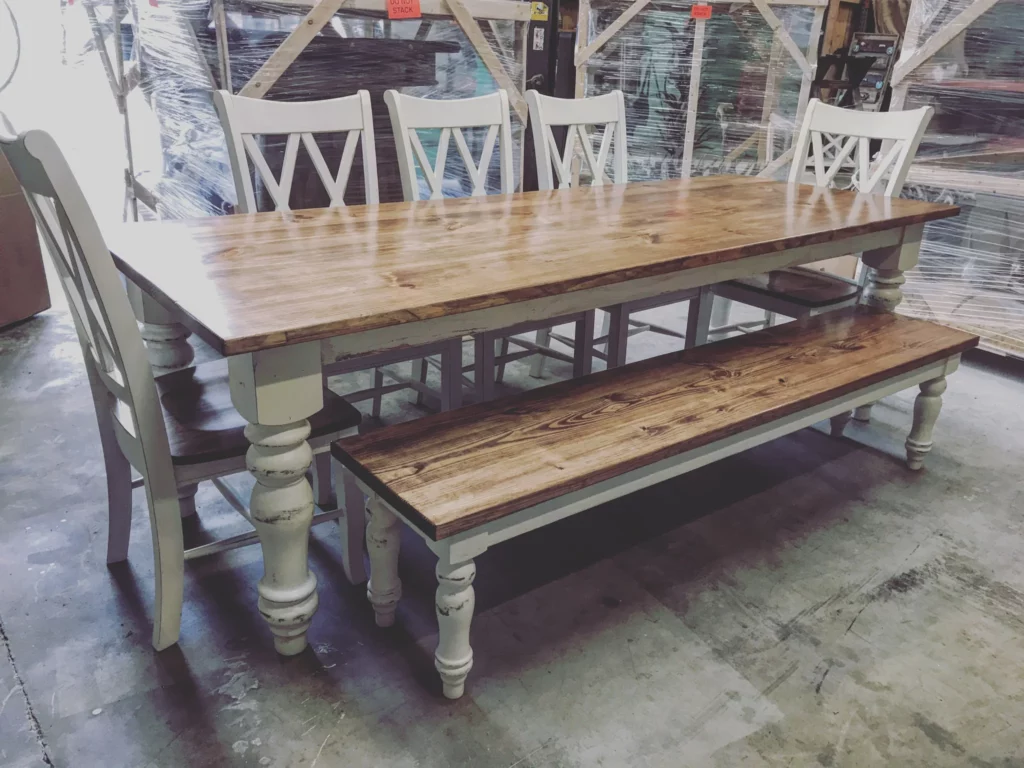Ah, the allure of wooden furniture! From the rich grains to the warm tones, wood brings a touch of nature’s beauty into our homes. But have you ever wondered how furniture makers transform raw timber into stunning pieces of art? The secret lies in wood treatment techniques. In this blog post, we delve into the world of wood treatment, uncovering the various methods used to enhance the durability, aesthetics, and longevity of their creations.
Sanding and Smoothing: Every masterpiece begins with a blank canvas, and for furniture makers, that canvas is the raw wood. The first step in wood treatment is sanding and smoothing the surface. They employ sandpaper, sanding blocks, or power sanders to remove rough patches, imperfections, and splinters. This process not only creates a smooth texture but also prepares the wood for subsequent treatments, allowing the finish to adhere evenly.
Staining and Coloring: To add depth and character to wooden furniture, they employ staining and coloring techniques. Stains penetrate the wood’s fibers, enhancing the natural grain and adding warmth and richness to the surface. Whether using oil-based or water-based stains, carpenters carefully select the right hue to achieve the desired effect. Coloring techniques, such as dying or bleaching, offer additional options for creating unique finishes that suit the craftsman’s artistic vision.
Lacquering and Varnishing: Lacquering and varnishing are popular wood treatment techniques used to protect the surface and enhance its beauty. Lacquer provides a glossy and durable finish, adding a layer of protection against scratches and wear. Varnish, on the other hand, offers a more natural look with varying levels of sheen. Both lacquering and varnishing techniques require skilled application to achieve a flawless and long-lasting finish.
Oil and Wax Finishes: For those who appreciate a more organic and natural approach, oil and wax finishes are go-to techniques. These treatments penetrate the wood, nourishing and enhancing its beauty while providing a protective layer. Oil finishes, such as linseed or tung oil, bring out the wood’s natural luster and create a smooth, matte finish. Wax finishes, such as beeswax or carnauba wax, offer a subtle sheen and provide an additional layer of protection against moisture and stains.
Distressing and Aging: In recent years, the trend of distressed and aged furniture has gained popularity. Carpenters employ various techniques to achieve this weathered and vintage look. Methods like sanding, scraping, or denting the wood’s surface create intentional imperfections and wear. They may also use specialized paints or stains to mimic the effects of time and add character. Distressing and aging techniques allow them to create pieces that exude charm and a sense of history.
Sealing and Protecting: To ensure the longevity of wooden furniture, they make use of sealing and protective treatments. This includes applying sealants or topcoats that shield the wood from moisture, UV rays, and everyday wear and tear. Polyurethane, shellac, or epoxy coatings provide a robust barrier, preserving the beauty of the wood for years to come. By sealing and protecting their creations, carpenters ensure that their work remains a timeless and cherished addition to any space.
Wood treatment techniques are the secret ingredients that transform raw wood into exquisite furniture pieces. From sanding and staining to lacquering and distressing, furniture makers employ various methods to enhance the beauty, durability, and longevity of their creations. By mastering these techniques, they breathe life into wood, turning it into stunning works of art. So, whether you’re admiring a handcrafted table or a meticulously carved chair, take a moment to appreciate the skill and craftsmanship of the experts and the transformative power of wood treatment.
Ready to beautify your home? Call us today! Fox In the Sawdust

